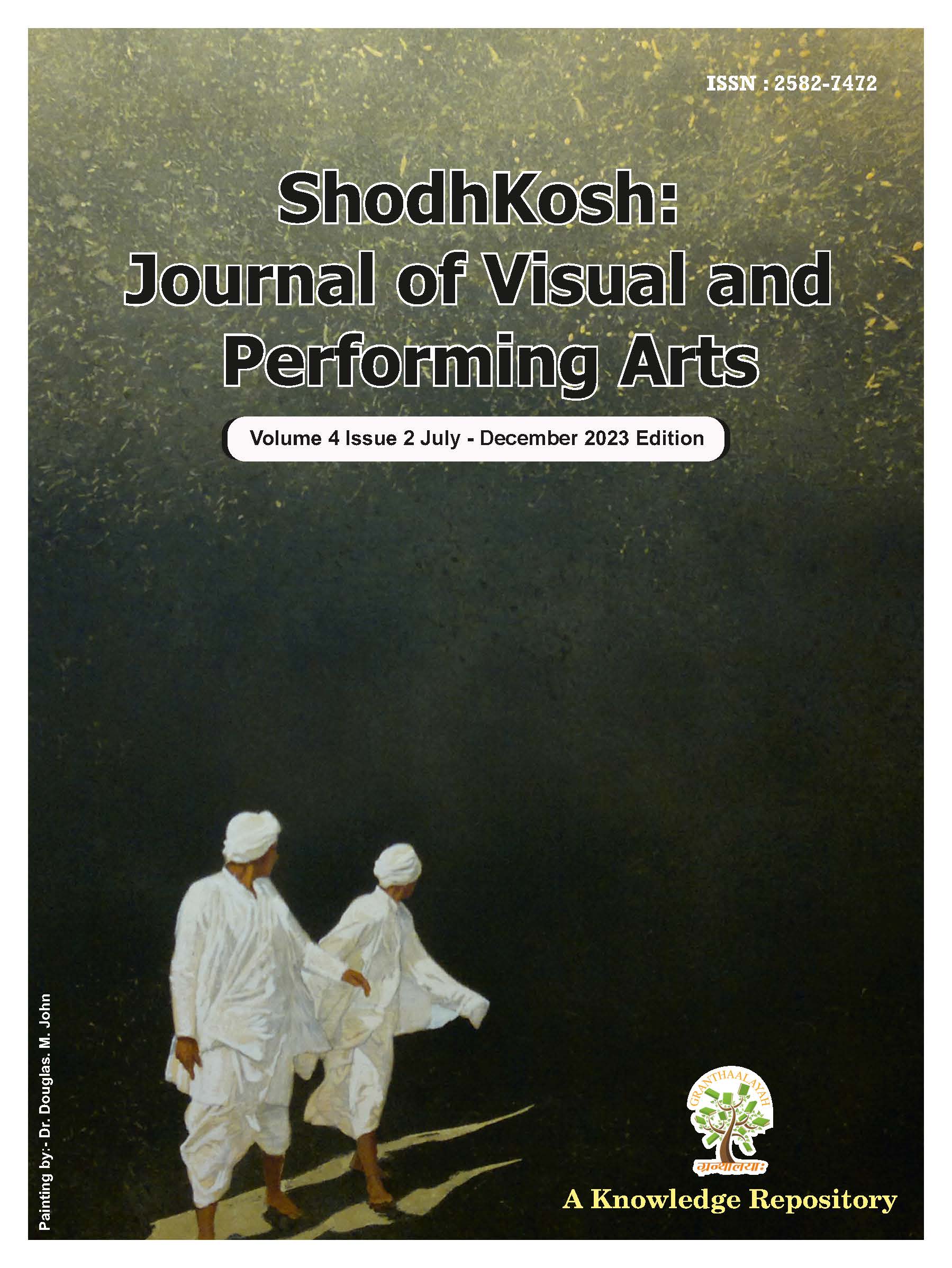A STATE OF THE ART REVIEW ON ADVANCES IN BEARING FAULT DIAGNOSIS USING MACHINE LEARNING APPROACH
DOI:
https://doi.org/10.29121/shodhkosh.v4.i2.2023.5976Keywords:
Bearings, Fault Diagnosis, Vibration Analysis, Condition Monitoring, Machine Learning.Abstract [English]
Diagnosing bearing issues is crucial because bearings are crucial parts of rotating machinery, supporting and guiding shafts, and because faults can result in lost productivity, damaged equipment, and safety hazards. One common technique for identifying bearing problems is vibration analysis. High-frequency resonances are isolated using sophisticated techniques like envelope analysis, fault frequencies are determined using frequency-domain techniques like the Fast Fourier Transform (FFT), and anomalies in signals are identified using time-domain analysis. Machine learning improves fault classification, while time-frequency methods such as wavelet transformations are employed to handle non-stationary signals. Every technique has its limitations: sophisticated techniques offer precision at the expense of complexity; frequency analysis performs well in steady settings but suffers from speed variations; time-domain analysis is straightforward but may reveal early issues. Accuracy, computational demands, and operational requirements must all be balanced when choosing the best strategy for bearing condition monitoring.
References
J. Faiz, M. Ojaghi, Different indexes for eccentricity faults diagnosis in three-phase squirrel-cage induction motors: a review. Mechatronics 19, 2–13 (2009) DOI: https://doi.org/10.1016/j.mechatronics.2008.07.004
D. Wang, W.T. Peter, K.L. Tsui, An enhanced Kurtogram method for fault diagnosis of rolling element bearings. Mech. Syst. Signal Process 35, 199–2013 (2013) DOI: https://doi.org/10.1016/j.ymssp.2012.10.003
J. Zarei, M.A. Tajeddine, H.R. Karimi, Vibration analysis for bearing fault detection and classification using an intelligent filter. Mechatronics 24, 151–157 (2014) DOI: https://doi.org/10.1016/j.mechatronics.2014.01.003
N. Tandon, A. Parey, Condition monitoring of rotary machines. Ser. Adv. Manuf. 5, 151–157 (2006) DOI: https://doi.org/10.1007/1-84628-269-1_5
S. Nandi, H.A. Toliyat, X. Li, Condition monitoring and fault diagnosis of electrical motors—a review. IEEE Trans. Energy Convers. 4, 719–729 (2005) DOI: https://doi.org/10.1109/TEC.2005.847955
L. Ma´rton, F. Van der Linden, Temperature dependent friction estimation: application to lubricant health monitoring. Mechatronics 22, 1078–1084 (2012) DOI: https://doi.org/10.1016/j.mechatronics.2012.09.003
A.W. Lees, N. Tandon, A. Choudhury, A review of vibration and acoustic measurement methods for the detection of defects in rolling element bearings. Tribol. Int. 32, 469–480 (1999) DOI: https://doi.org/10.1016/S0301-679X(99)00077-8
M.S. Safizadeh, S.K. Latifi, Using multi-sensor data fusion for vibration fault diagnosis of rolling element bearings by accelerometer and load cell. Inf. Fusion 18, 1–8 (2014) DOI: https://doi.org/10.1016/j.inffus.2013.10.002
N. Mehala, R. Dahiya, Condition monitoring and fault diagnosis of induction motor using motor current signature analysis. PhD Thesis, National Institute of Technology, Kurushetra, October, 2010
A. Boudiaf, S. Bouhouche, A.K. Moussaoui, S. Taleb, An effective method for bearing faults diagnosis. In: IEEE Proceeding of 3rd International Conference on Control Engineering & Information Technology, pp. 1–6, 2015 DOI: https://doi.org/10.1109/CEIT.2015.7233187
Z. Zhang, Y. Wang, K. Wang, Fault diagnosis and prognosis using wavelet packet decomposition, Fourier transform and artificial neural network. J. Int. Manuf. 24, 1213–1227 (2013) DOI: https://doi.org/10.1007/s10845-012-0657-2
V.K. Rai, A.R. Mohanty, Bearing fault diagnosis using FFT of intrinsic mode functions in Hilbert-Huang transform. Mech. Syst. Signal Process. 6, 2607–2615 (2007) DOI: https://doi.org/10.1016/j.ymssp.2006.12.004
J. Ma, J. Wu, X. Wang, Y. Fan, T. Leng, A fault detection method of rolling bearing based on wavelet packet-cepstrum. Res. J. Appl. Sci. Eng. Technol. 5, 3402–3406 (2013) DOI: https://doi.org/10.19026/rjaset.5.4586
A. Verma, S. Srivastava, Review on condition monitoring techniques oil analysis, thermography and vibration analysis. Int. J. Enhanc. Res. Sci. Technol. Eng. 3, 18–25 (2014)
J. Lee, H. Kim, Development of enhanced Wigner–Ville distribution function. Mech. Syst. Signal Process 15, 367–398 (2001) DOI: https://doi.org/10.1006/mssp.2000.1365
M.S. Safizadeh, A.A. Lakis, M. Thomas, Time-frequency algorithms and their applications. Int. J. Comput. Appl. 7, 167–186 (2000)
M. Unal, M. Onat, M. Demetgul, H. Kucuk, Fault diagnosis of rolling bearings using a genetic algorithm optimized neural network. Measurement 58, 187–196 (2015) DOI: https://doi.org/10.1016/j.measurement.2014.08.041
H. Bendjama, S. Bouhouche, A.K. Moussaoui, Wavelet transform for bearing faults diagnosis. Proceedings of conference of advances in control engineering. Conf. Adv. Control Eng. 14, 85– 88 (2013)
W.T. Peter, Y.H. Peng, R. Yam, Wavelet analysis and envelope detection for rolling element bearing fault diagnosis-their affectivities and flexibilities. J. Vib. Acoust. 123, 303–310 (2001) DOI: https://doi.org/10.1115/1.1379745
Z. Peng, F. Chu, Y. He, Vibration signal analysis and feature extraction based on reassigned wavelet scalogram. J. Vib. Acoust. 25, 1087–1100 (2002) DOI: https://doi.org/10.1006/jsvi.2001.4085
Y. Yu, D. Yu, J.A. Cheng, Roller bearing fault diagnosis method based on EMD energy entropy and ANN. J. Vib. Acoust. 294, 269–277 (2006) DOI: https://doi.org/10.1016/j.jsv.2005.11.002
Z.K. Penga, P. Tsea, F.L. Chub, A comparison study of improved Hilbert-Huang transform and wavelet transform application to fault diagnosis for rolling bearing. Mech. Syst. Signal Process 19, 974–988 (2005) DOI: https://doi.org/10.1016/j.ymssp.2004.01.006
K.A. Loparo, Bearings vibration data set. The Case Western Reserve University Bearing Data Center. http://www.eecs.cwru. edu/laboratory/bearing/download.htm
J. Slavic, A. Brkovic, M.R. Bolteza, Typical bearing-fault rating using force measurements-application to real data. J. Vib. Cont. 17, 2164–2174 (2012) DOI: https://doi.org/10.1177/1077546311399949
D. Lee, V. Siu, R. Cruz, and C.J. Yetman, in (CSREA Press, 2016), pp. 194–200.
L. Wen, X. Li, L. Gao, and Y. Zhang, “A New Convolutional Neural Network-Based Data-Driven Fault Diagnosis Method,” IEEE Trans. Ind. Electron. 65(7), 5990–5998 (2018). DOI: https://doi.org/10.1109/TIE.2017.2774777
C. Lu, Y. Wang, M. Ragulskis, and Y. Cheng, “Fault Diagnosis for Rotating Machinery: A Method based on Image Processing,” PLOS ONE 11(10), e0164111 (2016). DOI: https://doi.org/10.1371/journal.pone.0164111
N.S. Ranawat, and P.K. Kankar, “Fault Diagnosis in Centrifugal Pump using Support Vector Machine and Artificial Neural Network,” J. Eng. Res., (2021).
Downloads
Published
How to Cite
Issue
Section
License
Copyright (c) 2023 Premal Patel, Keval Bhavsar, Umang Parmar, Pina M. Bhatt

This work is licensed under a Creative Commons Attribution 4.0 International License.
With the licence CC-BY, authors retain the copyright, allowing anyone to download, reuse, re-print, modify, distribute, and/or copy their contribution. The work must be properly attributed to its author.
It is not necessary to ask for further permission from the author or journal board.
This journal provides immediate open access to its content on the principle that making research freely available to the public supports a greater global exchange of knowledge.































